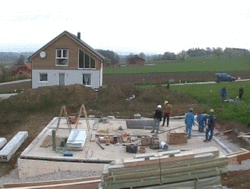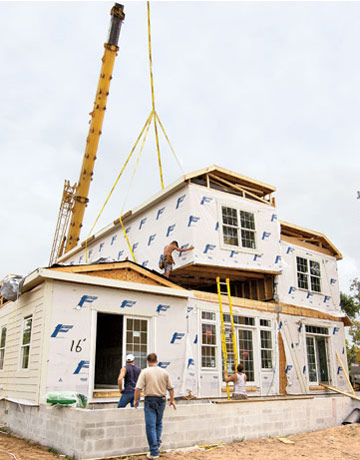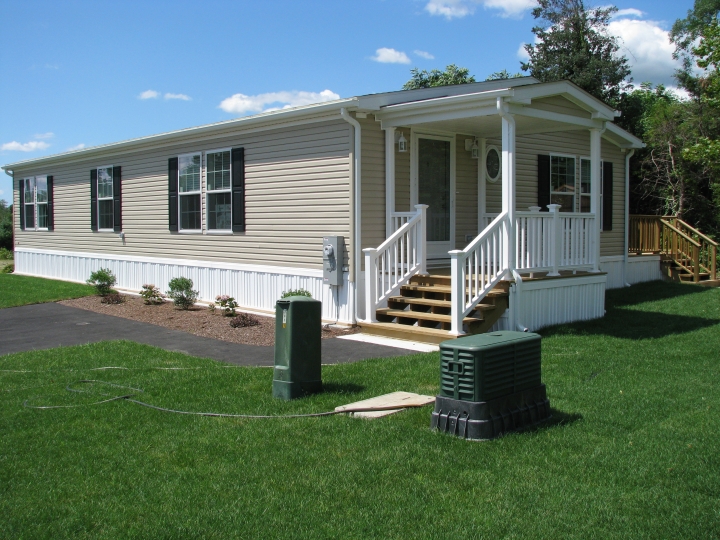Do You Know The Difference Between Prefab And Manufactured Homes?
When talking about different kinds of homes, there may be some confusion in regards to the terms used to discuss what kind of house is being built. Prefab, Modular, Panel Built, and Manufactured are sometimes mistakenly used interchangeably, but they all mean different things.
Prefab
Short for Prefabricated housing, “Prefab” is a broad term that encompasses several different types of building. Technically, any home that has sections of the structure built in a factory and then assembled on site can fall under the “prefab” designation. Both Modular and Panel Built fall under the umbrella term of prefab, but just as different types of dogs are all canines but differ from each other, Modular and Panel Built both qualify as prefab, but are still different.
Panel Building

As you can see in the video to the right, panel building is accomplished by laying down the floor and then lowering each section of wall in to place one at a time.
This type of construction can be useful in building houses that don’t work neatly as modules and it can be just as structurally sound as other types of prefabricated building. Commercial prefabricated building is often done this way as it allows for wide open spaces and high ceilings. It is also much less expensive to transport a building in panels than in modules if it is large enough.
In the video you will notice that both the first and second story floors are bare when they are lifted in. This is not always the case. Sometimes manufacturers will already have placed anything that can be bolted down. Toilets, sinks, dishwashers, and anything else that can be properly secured during travel can be pre-attached to the floor and cabinets and light fixtures can be pre-attached to walls. This means less work for the builder and saved time and money for you.
Modular Building
 This picture shows a module being lowered in place by a crane. With modular building, the house is constructed in separate box-like modules which are then secured together to form a whole. Since the modules have to be transported on the backs of flat-bed trucks over highways, they generally have to be no longer than the truck and no wider than 16’. This traditionally meant that every room in the house had to be less than 16’ wide, but with new technology, old barriers in modular building are breaking down and houses are becoming infinitely customizable.
This picture shows a module being lowered in place by a crane. With modular building, the house is constructed in separate box-like modules which are then secured together to form a whole. Since the modules have to be transported on the backs of flat-bed trucks over highways, they generally have to be no longer than the truck and no wider than 16’. This traditionally meant that every room in the house had to be less than 16’ wide, but with new technology, old barriers in modular building are breaking down and houses are becoming infinitely customizable.
Modular building usually doesn’t allow for additional structures like garages or porches to be built in the factory, but by combining panel building and modern modular building techniques, modular home factories are able deliver your home up to 90% complete.
Manufactured Housing
 While built in a factory like prefabs, there is no construction that happens on site. Manufactured homes are constructed on a steel frame, shipped on its own wheels, and then laid on a crawl space, or a slab of concrete. In some cases, the wheels that got the house to the build site aren’t even removed, just covered up with side skirting. The picture on the right has had skirting added to try to conceal that it is a manufactured home.
While built in a factory like prefabs, there is no construction that happens on site. Manufactured homes are constructed on a steel frame, shipped on its own wheels, and then laid on a crawl space, or a slab of concrete. In some cases, the wheels that got the house to the build site aren’t even removed, just covered up with side skirting. The picture on the right has had skirting added to try to conceal that it is a manufactured home.
Manufactured homes don’t tend to age well, are prone to maintenance issues, and are generally considered to be the worst type of home to live in.
The Difference Between The Two
Building Codes
Prefabricated houses of all kinds must adhere to state and federal building codes and undergo regular inspections, just like any site-built home. This ensures that prefab homes are at least as safe as their site-built counterparts, though there is evidence that a well-built modular home is even more sturdy than a similar site-built home. Manufactured homes on the other hand only have to adhere to HUD standards (Department of Housing and Urban Development) which has much more lenient rules and regulations.
Resale Value
Unlike prefabricated homes which are considered real estate and so maintain or increase in value over time like a site-built home, manufactured homes are considered personal property and so lose value as soon as it’s driven off the lot, just like a car. Their value will continue to decrease for the full life of the home.
Building Limitations
While prefabricated housing used to be limited to very basic designs, modern building techniques have allowed prefabs to become just easily customizable as site-built homes. Unfortunately, manufactured homes are still very much constrained, and have extremely limited options. Most manufactured homes dealers will have the home pre-built and then just sell from their available stock. This means that any customizations made would be done by the owner.
Appearance
Prefab homes are traditionally wood framed, but the push toward modern styles and sustainable living has forced the industry to adopt steel-frame construction for some projects. This allows modular and panel built homes a flexibility in design that allows for custom architecture. Some manufactured homes still have the tin-can look of years gone by and some have been modernized to look almost like a standard home, but there is little to no room for exterior alterations or creativity.
Quality
Perhaps the largest difference between prefab homes and manufactured homes is the quality of the final product. Modular homes are built with factory precision using 25% more material on average than either site-built or manufactured homes. According to FEMA, they stand up better in extreme weather, and they require comparatively little maintenance.








